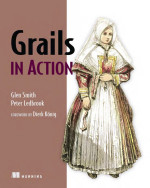 Recently I have become a big fan of Grails.
Recently I have become a big fan of Grails.
I think even if you are actually not using the bits of Grails, Grails can provide valuable insights and fresh perspectives in the turgid maze of Java EE development.
At the gr8conf it was stated, that Groovy and Grails are in the transition from the early adoption phase to mainstream technology.
Becoming a mainstream technology is a dangerous beast, which can brings dark secrets into the light.
Grails seems currently to be in a fight with this beast, as some critics has been voiced on the mailing lists. This is nicely summarized in the following post:
Are Bugs in Grails Hurting Adoption?
I think critics are essential for a product to become mature. It shows that there are actually people out there that care, and that the community is not just a bunch of zealots.
The crucial question is now how Grails will deal with the criticism.

 Old-school heavyweight concepts from the ages of EJB2 still tantalize a lot of the Java enterprise projects.
Old-school heavyweight concepts from the ages of EJB2 still tantalize a lot of the Java enterprise projects.

